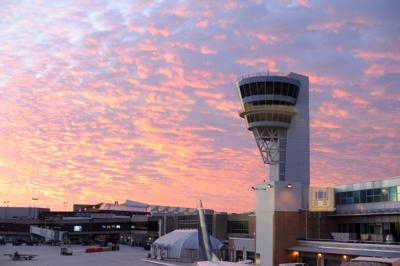Sat, Jul 01, 2023
Post-Pandemic Levels of Traffic Aren't Seeing Pre-Pandemic Staffing
A disconcerting report from the Department of Transportation's Office of the Inspector General reviewed a few ongoing problems in the ATC network, pointing to staffing challenges and an uncertain training pipeline as chief concerns.

The FAA made "limited efforts to ensure adequate controller staffing at critical air traffic control facilities," began the findings brief. Also worrisome, it added, was that "the Agency also has yet to implement a standardized scheduling tool to optimize controller scheduling practices at these facilities, and FAA officials disagree on how to account for trainees when determining staffing numbers." That lack of clear direction bears out in a few other ways, where locations stand shorthanded due to unclear and changing training timelines.
The report said that the FAA continues to face staffing challenges, as expected to some degree after a 2-year interruption in training and stable operations - but disconcertingly "lacks a plan to address them". The DoT report said that lack of planning "poses a risk to the continuity of air traffic operations", with spot checks revealing that 20 of 26 (77%) critical facilities are staffed below the FAA's minimum 85% threshold. And it's not just backwater, low traffic regions of the country. High-traffic centers like New York Terminal Radar Approach Control and Miami Tower sit at eyebrow-raising 54% and 66% staffing.
The COVID interruption continues to be felt throughout the ATC circuit, too, with years of training pauses stacking up to compound an already inconsistent flow of fresh blood into the industry. The training pause added another 2-year delay, which will "significantly increase controller certification times". Like the rest of the report, the FAA... doesn't really have a plan for that, either. The DoT said "The FAA will not know the full impact of the training suspension on certification times for several years because training outcomes vary widely, and it can take more than 3 years to train a controller. Due to these uncertain training outcomes, the FAA cannot ensure it will successfully train enough controllers in the short term."
The report issued a pair of recommendations to safeguard minimal staffing levels. First, the review of the models used to distribute certified professional controllers for ATC facilities, and update interim staffing levels as necessary. Secondly, the implementation of a new labor distribution system with features for timekeeping, overtime, and Controller-in-Charge tracking.
More News
Aero Linx: Aviators Code Initiative (ACI) Innovative tools advancing aviation safety and offering a vision of excellence for aviators. The ACI materials are for use by aviation pra>[...]
Make Sure You NEVER Miss A New Story From Aero-News Network Do you ever feel like you never see posts from a certain person or page on Facebook or Instagram? Here’s how you c>[...]
From 2016 (YouTube Edition): Who You Gonna Call When You Have a Rocket Engine that Needs a Spacecraft? While at EAA AirVenture 2016, ANN CEO and Editor-In-Chief, Jim Campbell, sat >[...]
"In my opinion, if this isn't an excessive fine, I don't know what is... The odds are good that we're gonna be seeking review in the United States Supreme Court. So we gotta muster>[...]
Expedite Used by ATC when prompt compliance is required to avoid the development of an imminent situation. Expedite climb/descent normally indicates to a pilot that the approximate>[...]
 ANN's Daily Aero-Linx (04.30.25)
ANN's Daily Aero-Linx (04.30.25) ANN FAQ: Turn On Post Notifications
ANN FAQ: Turn On Post Notifications Classic Aero-TV: Agile Aeros Jeff Greason--Disruptive Aerospace Innovations
Classic Aero-TV: Agile Aeros Jeff Greason--Disruptive Aerospace Innovations Aero-News: Quote of the Day (04.30.25)
Aero-News: Quote of the Day (04.30.25) ANN's Daily Aero-Term (04.30.25): Expedite
ANN's Daily Aero-Term (04.30.25): Expedite



